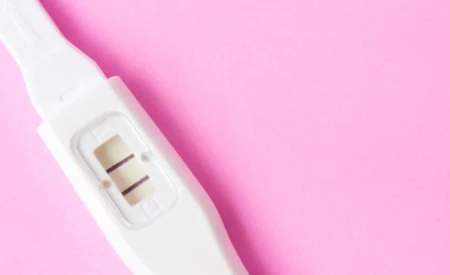Sixty-five percent of women use some form of birth control, yet finding the right method remains a complex journey (1). Many people struggle to locate a contraceptive option that works effectively, fits their budget, aligns with their beliefs, and doesn’t cause unmanageable side effects.
If you are curious about the current landscape of contraception, we have compiled 35 eye-opening birth control statistics and facts. This guide provides insights into prevalence, method types, failure rates, and accessibility issues.
We sourced these facts from government studies, medical research, and official analyses. You can trust that you are reading the most accurate and up-to-date data available.
Overview of Birth Control Methods
Let’s explore the primary birth control methods available today. We will also compare “perfect use” (following instructions exactly) against “typical use” (how most people actually use them in real life). The chart below highlights the effectiveness percentages for each option.
| Method | Effectiveness (Perfect Use) | Effectiveness (Typical Use) |
| Abstinence | 100% | 100% |
| Male sterilization (Vasectomy) | 99.99% | N/A |
| Female sterilization | >99% | N/A |
| Birth control implant (Nexplanon) | >99% | N/A |
| IUD (copper or hormonal) | >99% | N/A |
| Depo shot | >99% | 96% |
| Birth control patch | >99% | 92% |
| Combined birth control pill | >99% | 91% |
| Progesterone-only pill | 99% | 93% |
| Birth control ring | 99% | 93% |
| Male Condoms | 98% | 87% |
| Breastfeeding as birth control | 98% | Insufficient data |
| Fertility Awareness Method | 95-99% | 77-95% |
| Spermicide | 94-99% | 70% |
| Withdrawal (pull-out) | 96% | 78% |
| Female condom | 95% | 75-82% |
| Rhythm method (Calendar method) | 91-95% | 76-88% |
| Diaphragm | 94% | 87% |
| Cervical cap | 85% | 78% |
| Sponge | 86% | 78% |
35 Birth Control Statistics and Facts
Birth control history dates back to 1550 B.C., when women used tampons made from seed wool soaked in dates, honey, and ground thorn trees (2). While methods have certainly improved since then, the data behind them is just as intriguing. Check out these 35 notable stats.
Contraceptive Use Statistics
Here is a look at the prevalence of contraceptive use globally and within the United States.
- Worldwide contraceptive prevalence: As of 2022, the estimated prevalence of any contraceptive method worldwide sat at 65 percent. This amounts to roughly 1.1 billion women. About 58 percent of married or in-union women currently rely on modern birth control methods like the pill, patch, or IUD.
- Massive growth over two decades: From 2000 to 2021, global birth control usage jumped from 900 million to 1.1 billion women. During this same window, the number of people opting for modern methods rose significantly from 663 million to 851 million.
- Current usage in the US: A detailed study from 2018 revealed that between 2015 and 2017, 64.9 percent of women aged 15 to 49 were actively using contraception (3).
- Most popular American methods: Female sterilization remains the most common method (18.6 percent), followed by the oral contraceptive pill (12.6 percent). Long-acting reversible contraceptives (LARCs) like IUDs come in third (10.3 percent), with male condoms following closely (8.7 percent).
- Permanent solutions are common: Thirty-six percent of women aged 15 to 49 rely on permanent contraception (4). This figure includes tubal ligation as well as partners who have had vasectomies.
- “In the moment” methods: Twenty-one percent of users in the 15 to 49 age bracket rely on coital-dependent birth control. This includes condoms, fertility awareness, withdrawal, and emergency contraception.
- Short-acting methods are less popular: Despite their effectiveness, short-acting methods like vaginal rings or patches see lower usage rates. Only about five percent of women between 15 and 49 choose these options.
- Lifetime usage is extremely high: Ninety percent of women between 18 and 64 have used contraception at some point in their lives (5). Furthermore, 76 percent of women have tried more than one method over time.
- Reasons beyond pregnancy prevention: While 85 percent of people use contraception to prevent pregnancy, 40 percent rely on it to manage medical conditions or prevent STIs. This highlights the dual utility of many contraceptives.
Birth Control Effectiveness and Failure Rates
Abstinence remains the only method that is 100 percent effective. While no other method offers a total guarantee, many come close. Here is the breakdown of failure rates and effectiveness.
- LARC methods top the charts: Long-acting reversible contraceptive (LARC) methods are incredibly reliable because they remove user error. The contraceptive implant, hormonal coil, and copper coil are all more than 99 percent effective (6).
- The gap in Depo shot effectiveness: The Depo shot (contraceptive injection) boasts over 99 percent effectiveness when administered perfectly on time. However, typical use drops that rate to 96 percent because users often miss their injection appointments.
- Sterilization is rarely reversible: Permanent birth control (vasectomy or female sterilization) has a failure rate of less than one percent (7). While highly effective, reversing these procedures is difficult, expensive, and not always successful.
- The “human error” factor: Short-acting hormonal options like the pill, ring, and patch are theoretically 99 percent effective. In reality, typical use varies from 91 percent to 93 percent accuracy due to missed doses or late applications.
- Condom effectiveness varies wildly: Male condoms can be 98 percent effective with perfect use (worn every time, the entire time, without breakage). However, typical use hovers around 87 percent (8). Roughly 15 out of 100 people relying solely on condoms get pregnant annually.
- Sponge effectiveness depends on history: The contraceptive sponge contains spermicide and covers the cervix. For women who have never given birth, it is about 86 percent effective. For those who have given birth, effectiveness drops to roughly 78 percent (9).
- Strictness matters for Fertility Awareness: The true Fertility Awareness Method involves checking basal body temperature and cervical mucus daily. When followed perfectly, it can be 99 percent effective (10). Looser application of the rules drops effectiveness to as low as 77 percent.
- Rhythm method risks: Often confused with fertility awareness, the rhythm method simply tracks calendar dates. With textbook cycles, it can be 95 percent effective (11). For the average person, effectiveness is closer to 76 percent.
Birth Control Education and Access
Access to contraception varies significantly based on income, location, and education. Here is a breakdown of the disparities in the U.S. system.
- High rates of formal sex ed: The vast majority of teenagers (96 percent of females and 97 percent of males) receive some formal sex education before age 18 (12). However, timing differs, with 47 percent of girls receiving it before high school compared to 38 percent of boys.
- Conversations at home: Nearly 80 percent of female teens and over two-thirds of male teens have discussed sex with their parents. Girls are more likely to discuss birth control access, while boys are more likely to discuss condom mechanics.
- Parental talks delay activity: Research links open parental communication with delayed sexual initiation. Teens who discuss sex with parents are also statistically more likely to use birth control when they do become active.
- Education impacts sterilization rates: Only 12 percent of women with a bachelor’s degree rely on sterilization (13). In contrast, 40 percent of women without a high school diploma have undergone the procedure.
- Pill usage by education level: Education levels flip for the pill. Only six percent of women without a high school diploma use oral contraceptives, while 18 percent of women with a bachelor’s degree or higher rely on them.
- Staying in school: Access to the pill before age 21 is cited as the most influential factor in enabling women to stay in college (14). Between 1969 and 1980, the dropout rate for women with pill access was 35 percent lower than those without.
- Career advancement: Contraception contributed to a 30 percent increase in women entering skilled careers (like medicine and law) between 1970 and 1990. It allows for better family planning alongside professional goals.
- Income affects unintended pregnancy: In the U.S., roughly 49 percent of pregnancies are unintended (15). This rate is highest among low-income women, highlighting the need for affordable access to reduce healthcare costs.
- The reality of “Contraceptive Deserts”: Over 19 million women in need live in contraceptive deserts (16). These are areas lacking health centers that offer a full range of methods. Over one million of these women live in counties without a single health center.
- Defining a desert: Ideally, there should be one health center per 1,000 women. A contraceptive desert is defined as a region with one health center serving 5,000 or more women.
Side Effects and Health Considerations
About 65 percent of women use birth control at any given time. Some abstain for personal reasons, while others stop due to adverse reactions. Before choosing a method, it is vital to understand the potential risks.
Important Information
Side effects often vary by demographics. For instance, over 50 percent of Black women are diagnosed with high blood pressure by age 19 (17). This underlying condition significantly impacts which hormonal options are safe to use.
- Tubal ligation risks: While rare, complications from tubal ligation can include internal bleeding, infection, and ectopic pregnancy (18). There is also a small failure rate (one in 200) where pregnancy can still occur.
- IUD pain and changes: Hormonal IUDs often make periods lighter or stop them entirely (19). However, insertion can be painful, and cramping may persist for days. Copper IUDs avoid hormones but can lead to heavier, more painful periods.
- Depo shot physical changes: The Depo shot is linked to irregular bleeding, weight gain, hair loss, and depression (20). After a year of use, nearly half of users stop having periods altogether. Note that the shot offers zero STI protection.
- Combined pill risks: Common pill side effects include bloating and spotting (21). More serious risks involve blood clots, heart attacks, and strokes, though these are rare. There is also a slight increase in breast cancer risk for current users.
- Vaginal ring reactions: A small number of ring users experience nausea, breast tenderness, and headaches (22). Like the pill, it carries an elevated risk for blood clots and cardiovascular issues due to the hormones involved.
- Who should avoid estrogen: Women with a history of migraines with aura, high BMI, liver problems, or a family history of deep vein thrombosis should generally avoid the combined pill and vaginal ring.
- Spermicide irritation: Spermicide can cause discharge, dryness, or odor (23). In rare cases, using it with a diaphragm or cervical cap can trigger Toxic Shock Syndrome. Symptoms include sudden fever, dizziness, and a rash resembling a sunburn.
- Sponge health risks: The sponge increases the risk of vaginal irritation (24). This irritation actually increases susceptibility to STIs like HIV. Some users may also have allergic reactions to the polyurethane material or sulfites.
- Vasectomy complications: The primary “side effect” is permanence; reversal is not guaranteed (25). Rare physical complications include infection, hematomas (blood collecting in the scrotum), or sperm granulomas (lumps caused by leaking sperm).






